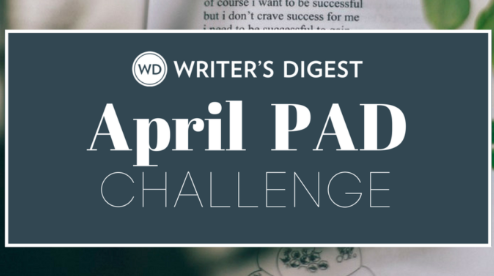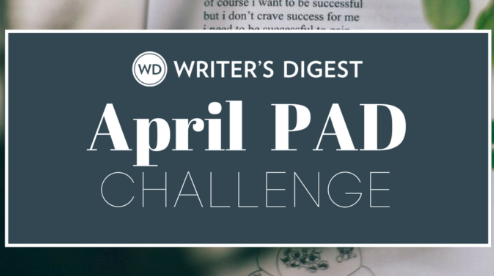2019 November PAD Chapbook Challenge: Next Steps
Here are the final steps for the 12th annual November PAD Chapbook Challenge! Use December and the beginning of January to revise and collect your poems into a chapbook manuscript. Here are some tips and guidelines.
Here are the final steps for the 12th annual November PAD Chapbook Challenge! Use December and the beginning of January to revise and collect your poems into a chapbook manuscript. Here are some tips and guidelines.
Okay, here are the next steps for this year's challenge. Before you dive into them, click here to read the original guidelines for the challenge.
Step One: Write the Poems
We accomplished this step during the month of November. We have 30 prompts to prove it (34 if we’re being technical with the two-for-Tuesday prompts).
Step Two: Revise the Poems
This step is optional, though I highly encourage taking a look over your first drafts and playing around with them in December.
Recreate Your Poetry!
Revision doesn’t have to be a chore—something that has to be done after the joy of the first draft. In fact, revision should be viewed as an enjoyable extension of the creation process—something that you want to experience after the joy of the first draft.
Learn the three rules of revision, seven revision filters, common excuses for avoiding revision (and how to overcome them), and more in this power-packed poetry revision tutorial.
Step Three: Collect the Poems
I’m looking for 10-20 pages of poems. Not more than one poem per page, though it’s okay to have more than one page per poem. If you wrote every day in the challenge, this means you’re going to have to make tough decisions about which poems to include.
A couple recommendations:
- Look for quality first. That’s what I’ll be looking for first.
- Search for a theme. It might be a storyline, common subjects, a voice, a mood, etc. Not necessary, but this can make a collection stronger.
Step Four: Format the Manuscript
I’m really not too picky here, but I do want all the poems in the same file. There are few things that irk me more than receiving 20 individual files.
Here are a few guidelines:
- 10- to 12-point font like Arial or Times New Roman (or something simple like that) is preferred. In other words, nothing too fancy.
- 1″ margins–give or take.
- .doc, .docx, .txt files are my favorites. But if you’re unable to do those, .pdf can work too.
- Please include your name and contact information.
- Please include a title for the manuscript.
- Table of Contents is not mandatory, but it’s a nice touch.
- Feel free to include a bio–but I’ve never used a bio to guide my judging.
- Please no images/art work.
Also, I won’t accept/consider manuscripts that include more than 20 poems with instructions that I pick my favorites. That’s not how this challenge works. You’re the poet; you need to make the artistic decisions.
Step Five: Submit the Manuscript
Submit manuscripts to rbrewer@aimmedia.com with the subject line: 2019 November PAD Chapbook Challenge. I have a very busy inbox–so the e-mail subject line is very, very important. Very. Deadline: January 15, 2020.
Step Six: Wait for Judging
My goal is to make a decision by spring. March 20, 2020. If I hit that goal, we should be ready to jump into the 2020 April PAD Challenge with some excitement. That said, I'm often juggling way too many things at once (some expected, some not so)–so please be patient with me if I find myself overwhelmed with unexpected projects between now and then.
Robert Lee Brewer is Senior Editor of Writer's Digest, which includes managing the content on WritersDigest.com and programming virtual conferences. He's the author of 40 Plot Twist Prompts for Writers: Writing Ideas for Bending Stories in New Directions, The Complete Guide of Poetic Forms: 100+ Poetic Form Definitions and Examples for Poets, Poem-a-Day: 365 Poetry Writing Prompts for a Year of Poeming, and more. Also, he's the editor of Writer's Market, Poet's Market, and Guide to Literary Agents. Follow him on Twitter @robertleebrewer.




